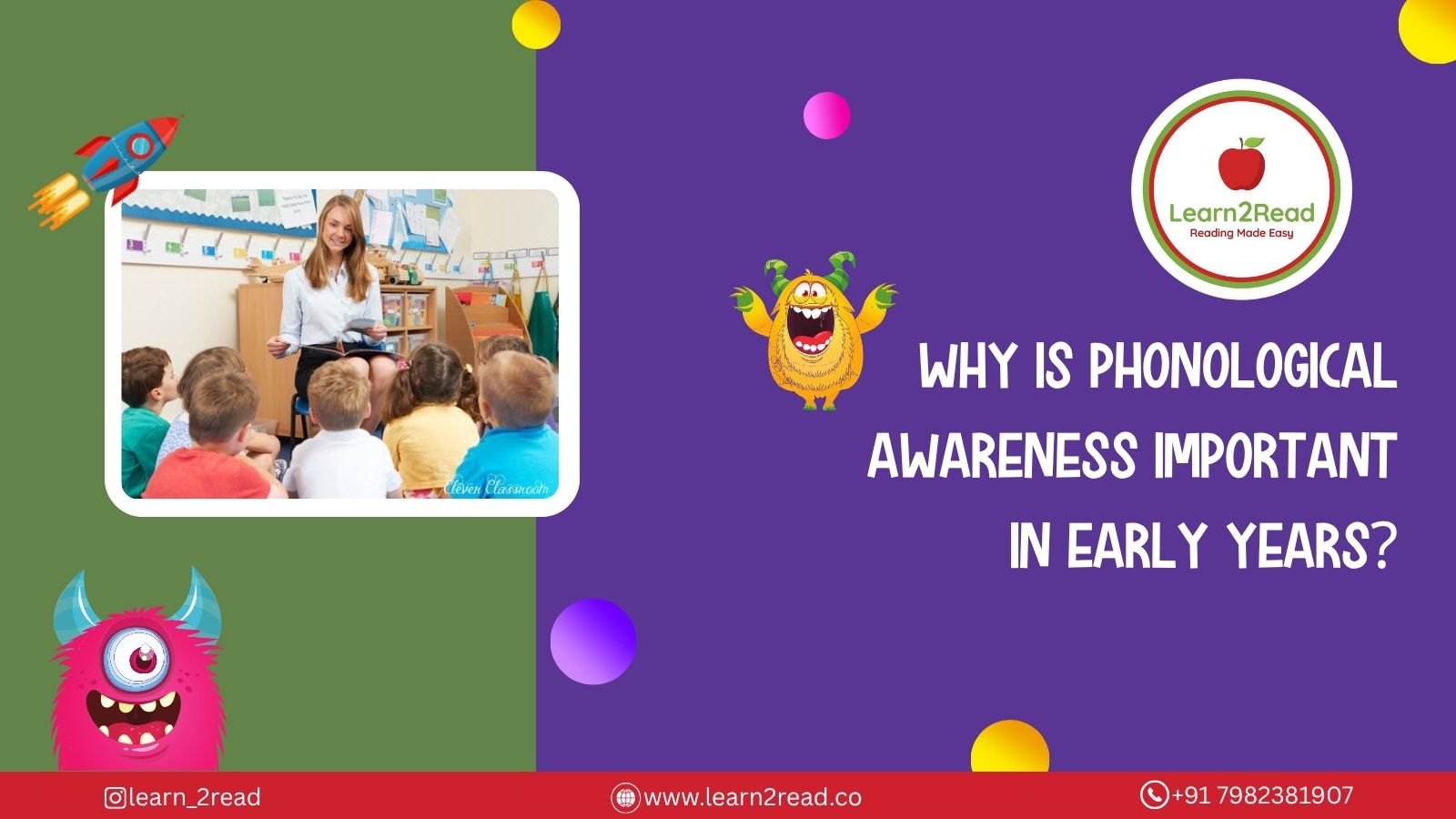17 October 2025
What is the Meaning of Phonemic Awareness

What is the Meaning of Phonemic Awareness
posted on : 17 October 2025
Does your child struggle to read a word or skip over tricky parts? This situation can be frustrating. Not only for children but for you as well.
The answer to turn that struggle into success is learning the meaning of phonemic awareness.
Phonemic awareness builds a strong foundation for early readers. It’s the secret skill behind reading fluency.
By learning this skill, children cannot only blend sounds or spot patterns. But decode unfamiliar words with confidence.
In this blog, we’ll break down what phonemic awareness means. Along with why it’s important, and simple ways to help children strengthen this skill.
Meaning of Phonemic Awareness: Foundation for Fluent Reading
Phonemic awareness is a crucial skill for young readers. It helps children hear, identify, and manipulate individual sounds (phonemes). Children learn that every letter or group of letters has a certain sound.
By understanding these sounds, they connect sounds to letters, blend to form words, and decode new words.
Overall, it’s an oral method that turns listening skills into reading success.
Discover the Examples of Phonemic Awareness
Phonemic awareness acts as a stepping stone for children. You can make them practice sounds while they’re playing, during lunch time, or at bedtime.
Let’s understand with an example:
- Identifying Individual Sounds: /d/ or /s/
- Segmenting Sounds: Say the sounds in rat – /r/, /a/, & /t/
- Identifying Rhyming Words: rat, cat, and bat
- Manipulating Sounds: Change the /s/ sound in sat to the /m/ sound as in mat
- Blending Sounds: /b/, /i/, /t/, and /e/ to ‘bite’
Now, let’s take a look at why phonemic awareness is important for children.
Why is Phonemic Awareness Important?
Phonemic awareness isn’t just a concept. It’s a foundation of literacy.
Skipping it may lead to difficulties. Without it, children often struggle to identify sounds, & makes reading slow. Thus, kids end up being confused and frustrated.
However, teaching phonemic awareness can be beneficial in many ways. Including:
- Children learn to blend sounds to decode words easily.
- They start recognizing new words, which boosts their vocabulary skill.
- Elimination of guesswork and memorizing because they understand the letter-sound relationship.
- Segmentation helps children develop better spelling skills.
Hence, phonemic awareness is the gateway to reading & writing. Once they understand sounds, they’ll not only learn to read, but will also enjoy reading.
Further, you can read about the levels of phonemic awareness.
What are the Five Levels of Phonemic Awareness?
Here are the five levels of phonemic awareness:
- Recognizing: The first level of awareness is about identifying individual sounds in each word.
For example, the word ‘bat’ has three sounds. - Isolation: In the second level, children learn to identify the beginning, middle, and ending sounds of each word.
For example, in the word ‘cat’ – /c/ (beginning), /a/ (middle), and /t/ (ending) - Blending: Children learn to combine sounds together to read a word.
For example, /s/ /u/ /n/ becomes ‘sun’ - Segmentation: Children learn to break each word into individual sounds.
For example, ‘ship’ – /sh/ /i/ /p/ - Manipulating: The last level includes addition, deletion, and substitution of sounds. Kids learn to play with sounds to form a new word.
For example:- Addition: Add /s/ to the beginning of ‘top’ – ‘stop’
- Deletion: Remove /s/ from ‘stop’ – ‘top’
- Substitution: Change /m/ in ‘mat’ to /s/ – ‘sat’
Together, these five levels help transform listening skills into strong reading and spelling abilities.
What is the Aim of Phonemic Awareness?
The primary aim of phonemic awareness is to establish a foundation for successful reading and writing. It helps children to hear, recognize, and work with sounds in spoken words. It’s an oral skill that makes decoding, blending, spelling, and word recognition easier.
Phonemic awareness ensures that your child learn these elements:
- Blending sounds
- Decoding words
- Recognizing sounds & familiar words
- Spelling accuracy
- Develop reading fluency
- Strong comprehension skills
- Gain confidence to read
Final Thought
The meaning of phonemic awareness is simple: it’s the ability to hear, identify, and play with the sounds. It’s a crucial skill that must be taught to kids in early childhood. Children learn to decode, spell, and read with confidence.
The ultimate aim of phonemic awareness is to prepare a child for successful reading and writing. It helps children to turn sound awareness into strong, lifelong literacy skills.
Introduce phonemic awareness early to kids to make them fall in love with reading. Moreover, succeed in every learning journey ahead.
Learn2Read is the best online platform for teaching phonemic awareness to kids. We monitor growth, identify areas that require practice, and make learning fun and motivating.
Frequently Asked Questions (FAQs)
1. What is phonemic awareness?
Phonemic awareness helps children hear, identify, and manipulate individual sounds (phonemes). Children learn that every letter or group of letters has a certain sound.
For example:
- Identifying Individual Sounds: /d/ or /s/
- Segmenting Sounds: Say the sounds in rat – /r/, /a/, & /t/
- Identifying Rhyming Words: rat, cat, mat, and bat
- Manipulating Sounds: Change the /s/ sound in sat to the /m/ sound as in mat
- Blending Sounds: /b/, /i/, /t/, and /e/ to bite
2. What is phonemic awareness in reading?
Phonemic awareness establishes a foundation for successful reading. It helps children to hear, recognize, and work with sounds in spoken words. It’s an oral skill that makes decoding, blending, spelling, and word recognition easier.
3. What are the 5 levels of phonemic awareness with examples?
Here are the five levels of phonemic awareness with examples:
- Recognizing: Identifying individual sounds in each word. For example, the word ‘bat’ has three sounds.
- Isolation: Identifying the beginning, middle, and ending sounds of each word. For example, in the word ‘cat’ – /c/ (beginning), /a/ (middle), and /t/ (ending)
- Blending: Combine sounds together to read a word. For example, /s/ /u/ /n/ becomes ‘sun’
- Segmentation: Break each word into individual sounds. For example, ‘ship’ – /sh/ /i/ /p/
- Manipulating: Kids learn to play with sounds to form a new word. For example, change /m/ in ‘mat’ to /s/ – ‘sat’
Latest Posts


17 October 2025
10 Fun Phonics Awareness Activities for Preschoolers

17 October 2025
What is the Meaning of Phonemic Awareness

17 October 2025



